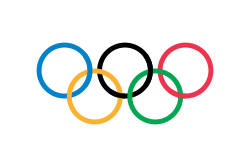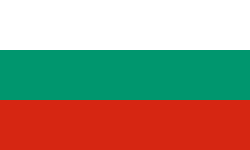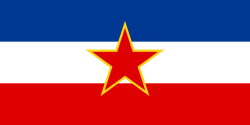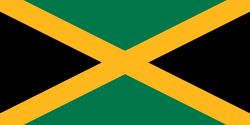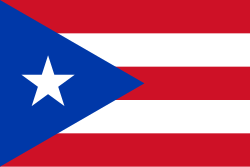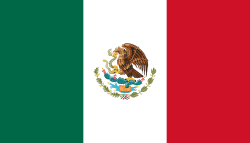Herrarnas tvåmanna i bob vid olympiska vinterspelen 1992
| Tvåmanna vid de XVI:e olympiska vinterspelen | |
 Bob | |
| Anläggning | La Plagne |
|---|---|
| Datum | 15-16 februari |
| Deltagare | 92 från 25 nationer |
| Medaljörer | |
Donat Acklin | |
Markus Zimmermann | |
Günther Eger | |
| ← 1988 1994 → | |
Herrarnas tvåmannabobåkning i vinter-OS 1992 ägde rum i Albertville, Frankrike den 16 februari 1992.
Medaljörer
| Gren | Guld | Silver | Brons |
| Herrar, tvåmanna[1] | Gustav Weder Donat Acklin | Rudolf Lochner Markus Zimmermann | Christoph Langen Günther Eger |
Resultat
| Placering | Land | Idrottare | Tid |
| Gold | 4:03,26 | ||
| Silver | 4:03,55 | ||
| Bronze | 4:03,63 | ||
| 4 | 4:03,67 | ||
| 5 | 4:03,72 | ||
| 6 | 4:03,87 | ||
| 7 | 4:03,95 | ||
| 8 | 4:04,00 | ||
| 9 | 4:04,08 | ||
| 10 | 4:04,36 | ||
| 11 | 4:04,84 | ||
| 12 | 4:04,94 | ||
| 13 | 4:05,39 | ||
| 14 | 4:05,56 | ||
| 15 | 4:05,62 | ||
| 16 | 4:06,33 | ||
| 17 | 4:06,38 | ||
| 18 | 4:06,68 | ||
| 19 | 4:06,86 | ||
| 20 | 4:07,30 | ||
| 21 | 4:07,45 | ||
| 22 | 4:07,84 | ||
| 23 | 4:08,13 | ||
| 24 | 4:08,17 | ||
| 25 | 4:08,31 | ||
| 26 | 4:08,332 | ||
| 27 | 4:08,48 | ||
| 28 | 4:08,77 | ||
| 29 | 4:10,11 | ||
| 30 | 4:10,25 | ||
| 31 | 4:10,84 | ||
| 32 | 4:10,93 | ||
| 33 | 4:10,97 | ||
| 34 | 4:05,56 | ||
| 35 | 4:11,68 | ||
| 36 | 4:12,76 | ||
| 37 | 4:13,09 | ||
| 38 | 4:13,48 | ||
| 39 | 4:13,62 | ||
| 40 | 4:14,07 | ||
| 41 | 4:14,22 | ||
| 42 | 4:14,63 | ||
| 43 | 4:15,42 | ||
| 44 | 4:16,60 | ||
| 45 | 4:16,72 | ||
| 46 | 4:41,61 |
Referenser
- ^ ”Bobsleigh at the 1992 Albertville Winter Games: Men's Two” (på engelska). sports-reference.com. Arkiverad från originalet den 2 maj 2016. https://web.archive.org/web/20160502035504/http://www.sports-reference.com/olympics/winter/1992/BOB/mens-two.html. Läst 20 juni 2016.
| |||||||||||||||||||||||||||||||||||||||||||||||||||||||||||||||||||||||||||||||||||||||||||||||||||||||||||||||
| ||||||||
Media som används på denna webbplats
Pictograms of Olympic sports - Bobsleigh
An icon that represents a gold medal
An icon that represents a silver medal
An icon that represents a bronze medal
Kanadas flagga, införd 1965; denna version med Pantone‐nyanser. Nuvarande utformning ersatte den tidigare kanadensiska Red Ensign.
Variant version of a flag of Japan, used between January 27, 1870 and August 13, 1999 (aspect ratio 7:10).
Variant version of a flag of Japan, used between January 27, 1870 and August 13, 1999 (aspect ratio 7:10).
Olympic Movement flag
Proportions 2:3, created 1913, adopted 1914, first used 1920.
- Colors as per http://fairspielen.de/wp-content/uploads/2015/09/Annexe-3-Olympism_and_the_Olympic_Symbol_-_Principles_and_Usages_Guide-1.pdf
- blue: PMS 3005C
- yellow: PMS 137C
- black: PMS 426C
- green: PMS 355C
- red: PMS 192C
- Dimensions of the rings taken from http://fairspielen.de/wp-content/uploads/2015/09/Annexe-3-Olympism_and_the_Olympic_Symbol_-_Principles_and_Usages_Guide-1.pdf
Flag of the Socialist Federal Republic of Yugoslavia (1946-1992).
The design (blazon) is defined in Article 4 of the Constitution for the Republic of Yugoslavia (1946). [1]
Chinese Taipei Olympic Flag. According to the official website of Chinese Taipei Olympic Committee, Blue Sky(circle) & White Sun(triangles) above the Olympic rings is neither the National Emblem of the Republic of China, nor the Party Emblem of Kuomintang (KMT), but a design in between, where the triangles do not extend to the edge of the blue circle, as registered at International Olympic Committee in 1981 and digitally rendered in 2013. Besides, the blue outline of the five-petaled plum blossom is broader than the red one. Moreover, the CMYK code of the blue one and the Blue Sky & White Sun is "C100-M100-Y0-K0", and different from the Olympic rings (C100-M25-Y0-K0). Note that it's the only version recognized by IOC.
Flag of Jamaica. “The sunshine, the land is green, and the people are strong and bold” is the symbolism of the colours of the flag. GOLD represents the natural wealth and beauty of sunlight; GREEN represents hope and agricultural resources; BLACK represents the strength and creativity of the people. The original symbolism, however, was "Hardships there are, but the land is green, and the sun shineth", where BLACK represented the hardships being faced.
Flag of the Socialist Federal Republic of Yugoslavia (1946-1992).
The design (blazon) is defined in Article 4 of the Constitution for the Republic of Yugoslavia (1946). [1]












